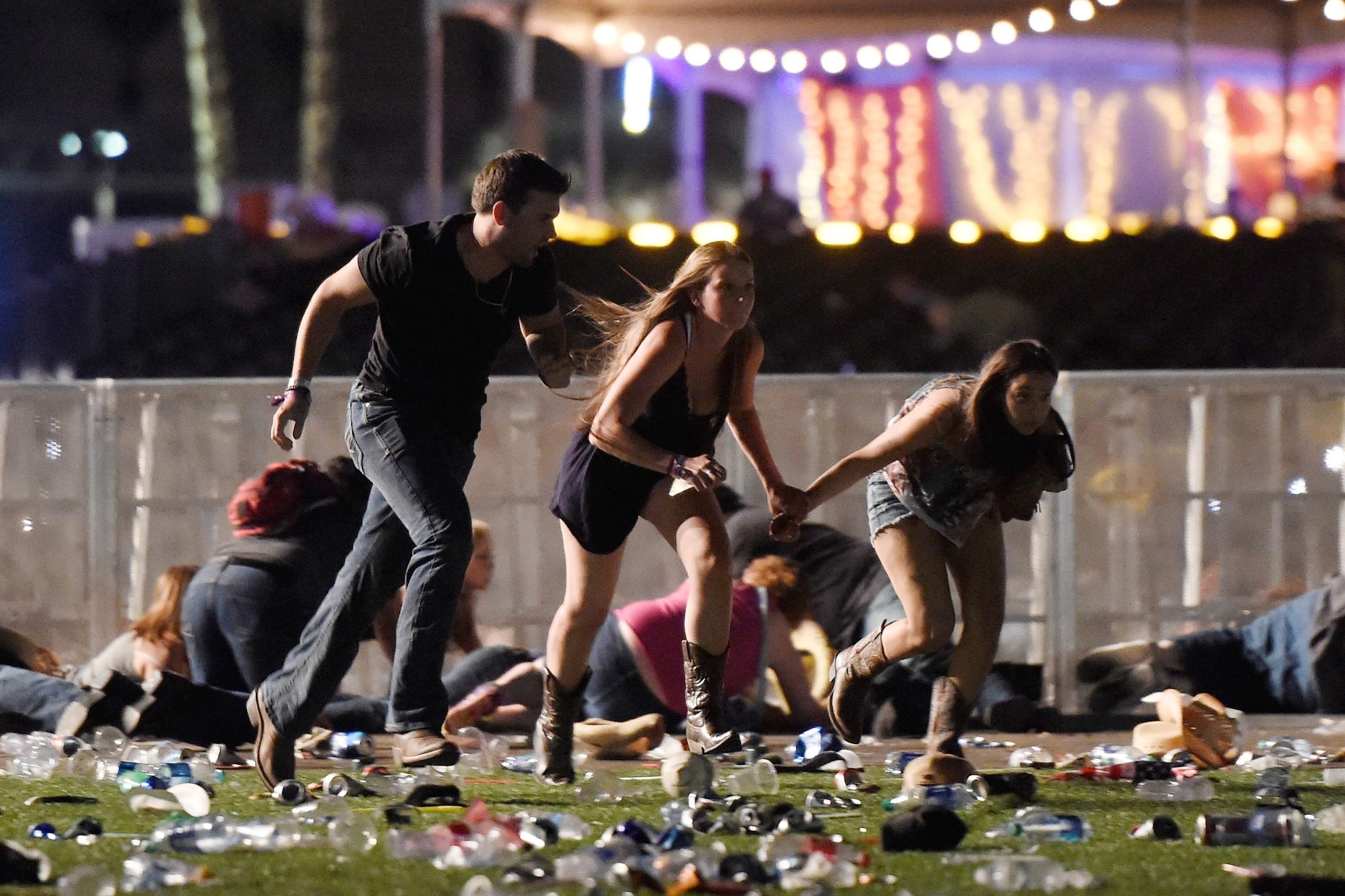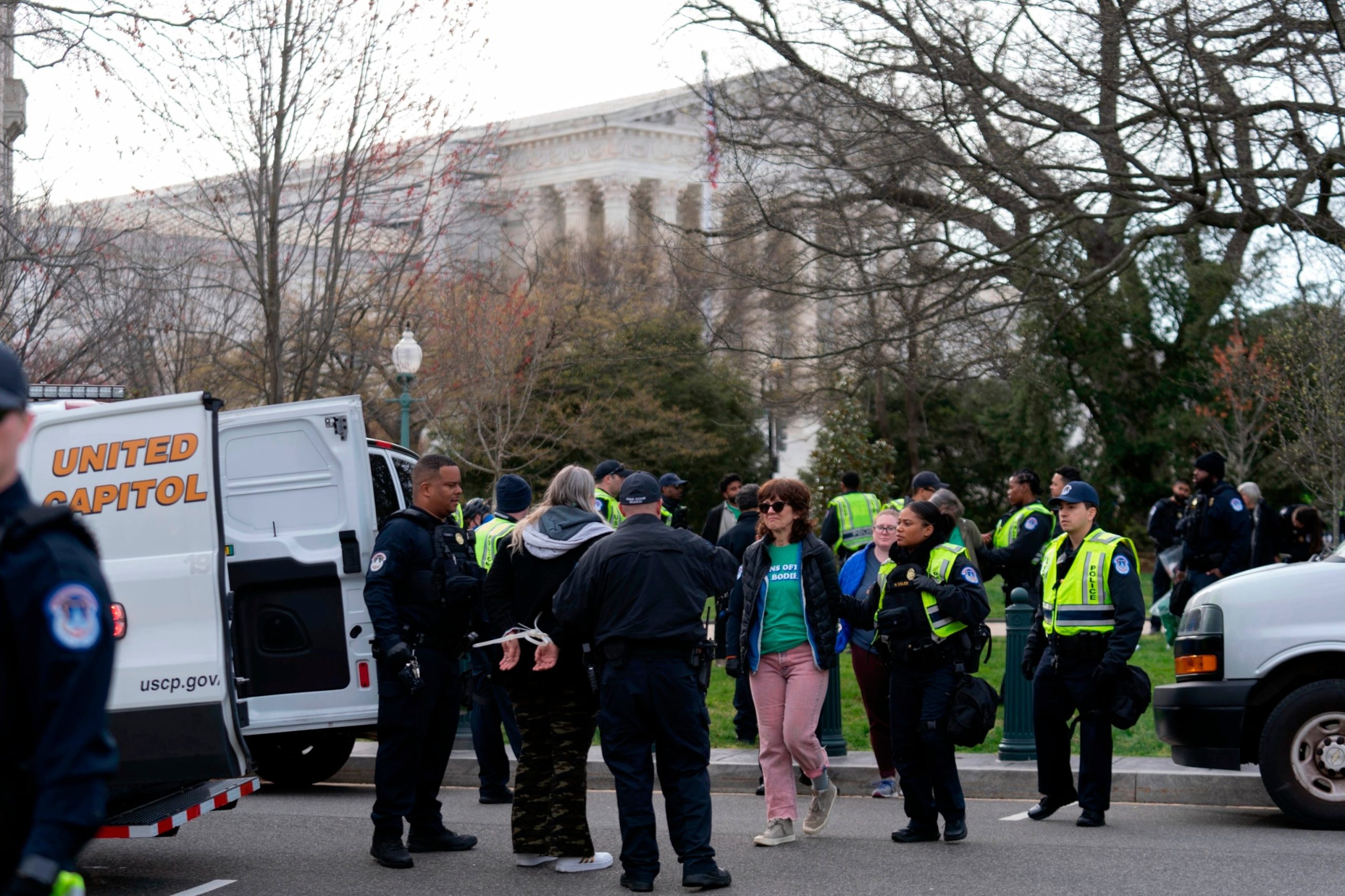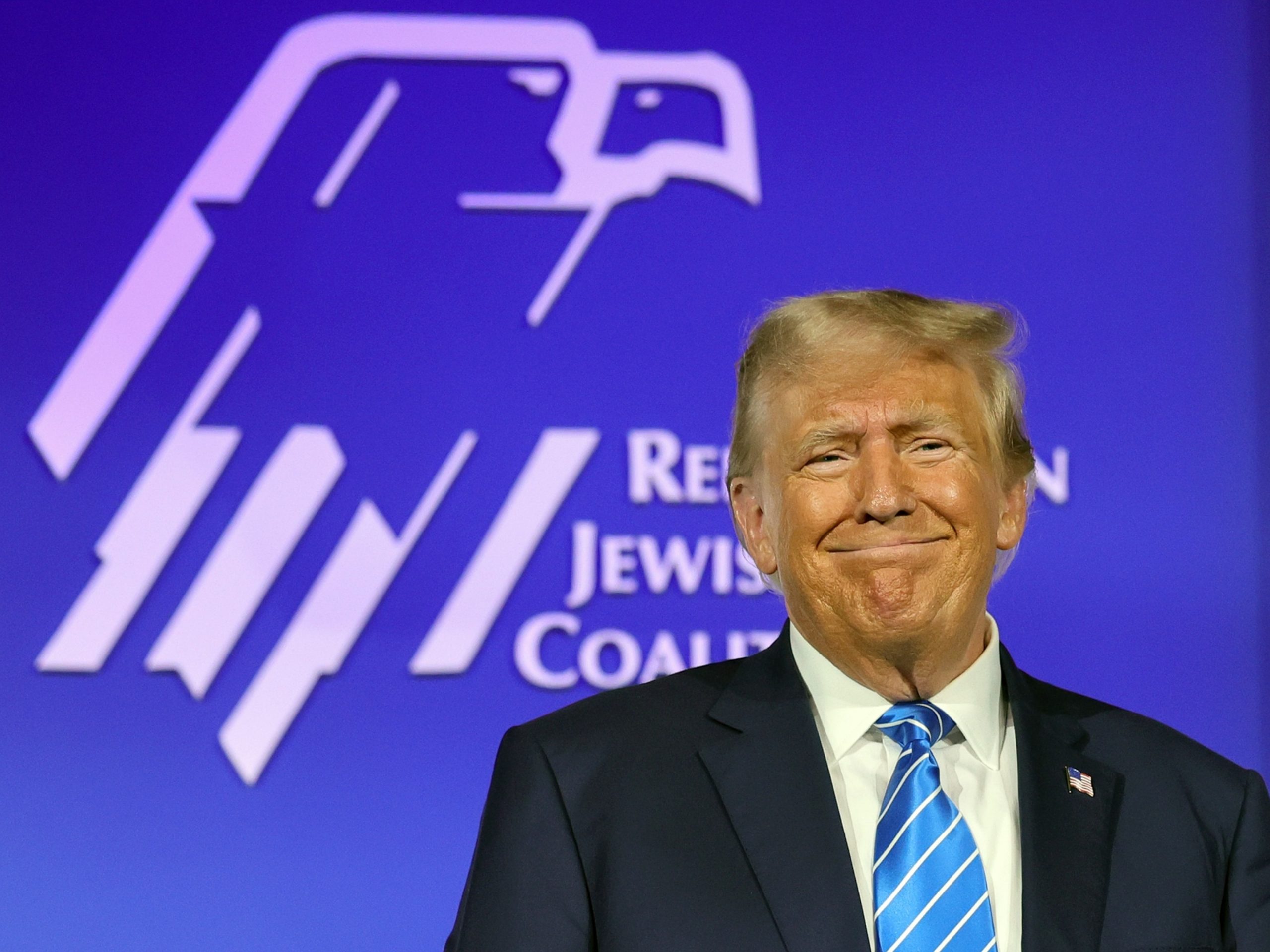The Supreme Court on Wednesday appeared open to upholding a Trump-era ban on bump stocks as devices that turn weapons into rapid-fire illegal “machine guns,” however it was not clear that a majority of justices would ultimately back such a ruling or agree on the rationale.
During oral arguments in the case Garland v. Cargill, both liberal and conservative justices suggested the devices – which allow a shooter to fire a semi-automatic rifle more rapidly and accurately – pose a significant danger and could reasonably be considered the types of weapons Congress sought to outlaw in the 1934 National Firearms Act.
Investigators say several of the devices were used to perpetrate America’s deadliest mass shooting in 2017 in Las Vegas, where a gunman killed 60 people and injured more than 500.
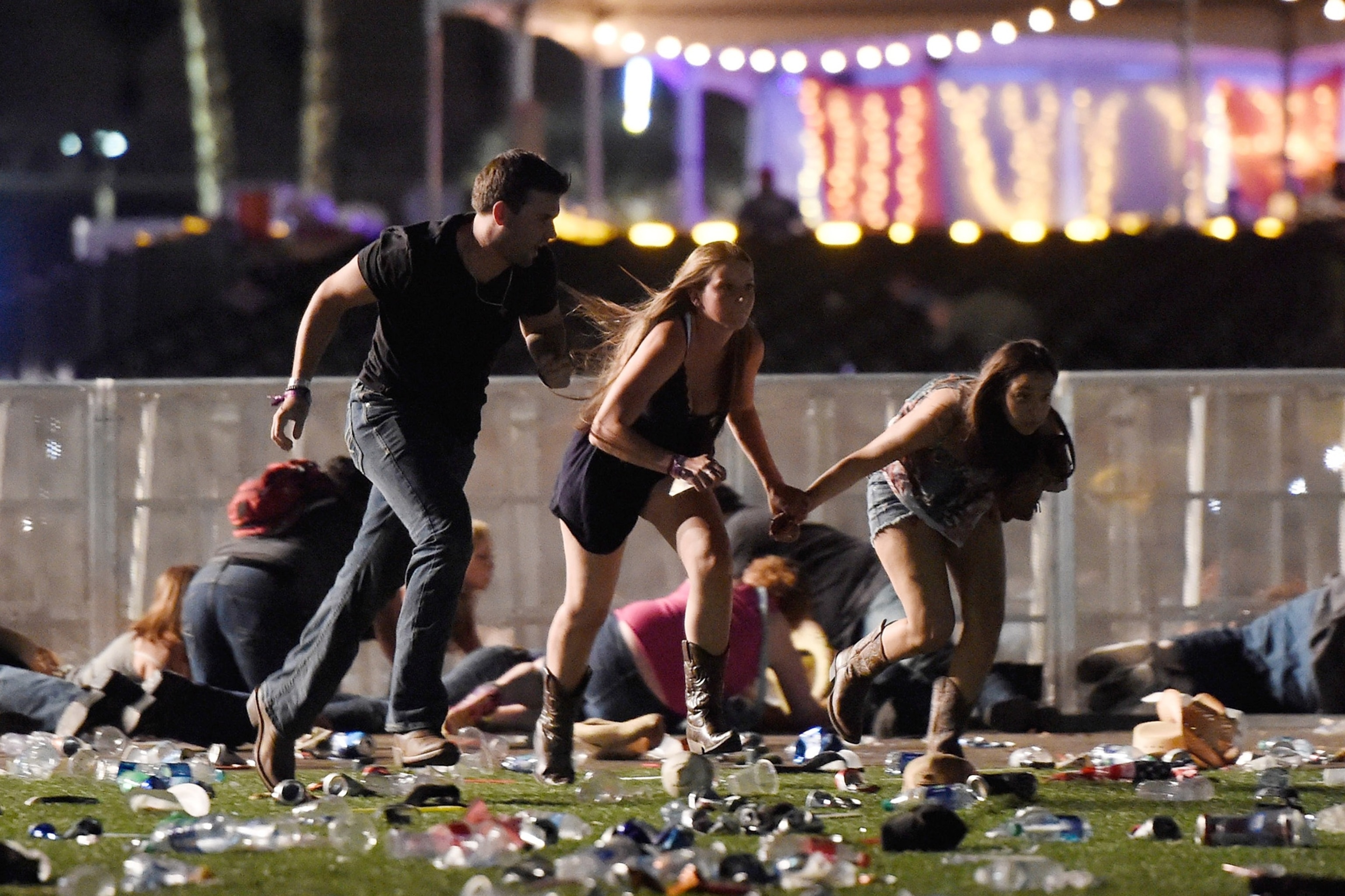
In this Oct. 1, 2017, file photo, people run from the Route 91 Harvest country music festival after apparent gun fire was heard, in Las Vegas.
David Becker/Getty Images, FILE
“Can you imagine a legislator thinking we should ban machine guns but we should not ban bump stocks?” asked Justice Samuel Alito.
“There was significant damage from machine guns, carnage, people dying, et cetera. And behind this is a notion that the bump stock does the exact same thing,” noted Justice Clarence Thomas. “So, with that background, why shouldn’t we look at a broader definition?”
At the same time, the court appeared divided and at times confused over the technical specifications of a fully automatic “machine gun,” whether they are replicated by adding a non-mechanical bump stock, and what the criminal liability could be for hundreds of thousands of Americans who legally purchased the accessory from store shelves.

A bump stocks make a gun fire by sliding the weapon against a fixed trigger finger rather than moving a trigger finger against the gun.
ABC News
The Justice Department’s Bureau of Alcohol, Tobacco and Firearms had legally approved bump stocks for sale for eight years starting in 2009, classifying them as recreational firearm accessories. More than 700,000 are said to have been sold. But after the 2017 Las Vegas mass shooting, the agency changed course, reinterpreting the 1934 law and ordering the devices surrendered or destroyed.
“Intuitively, I am entirely sympathetic to your argument,” Justice Amy Coney Barrett told the administration’s attorney, Deputy Solicitor General Brian Fletcher, who was defending the ban. “It seems like, yes, that this is functioning like a machine gun would. But, you know, looking at that definition, I think the question is, why didn’t Congress pass that legislation to make this cover it more clearly?”
“Those weapons do exactly what Congress meant to prohibit when it enacted the prohibition on machine guns, and those weapons are machine guns because they satisfy both disputed parts of the statutory definition,” Fletcher argued in his opening statement.
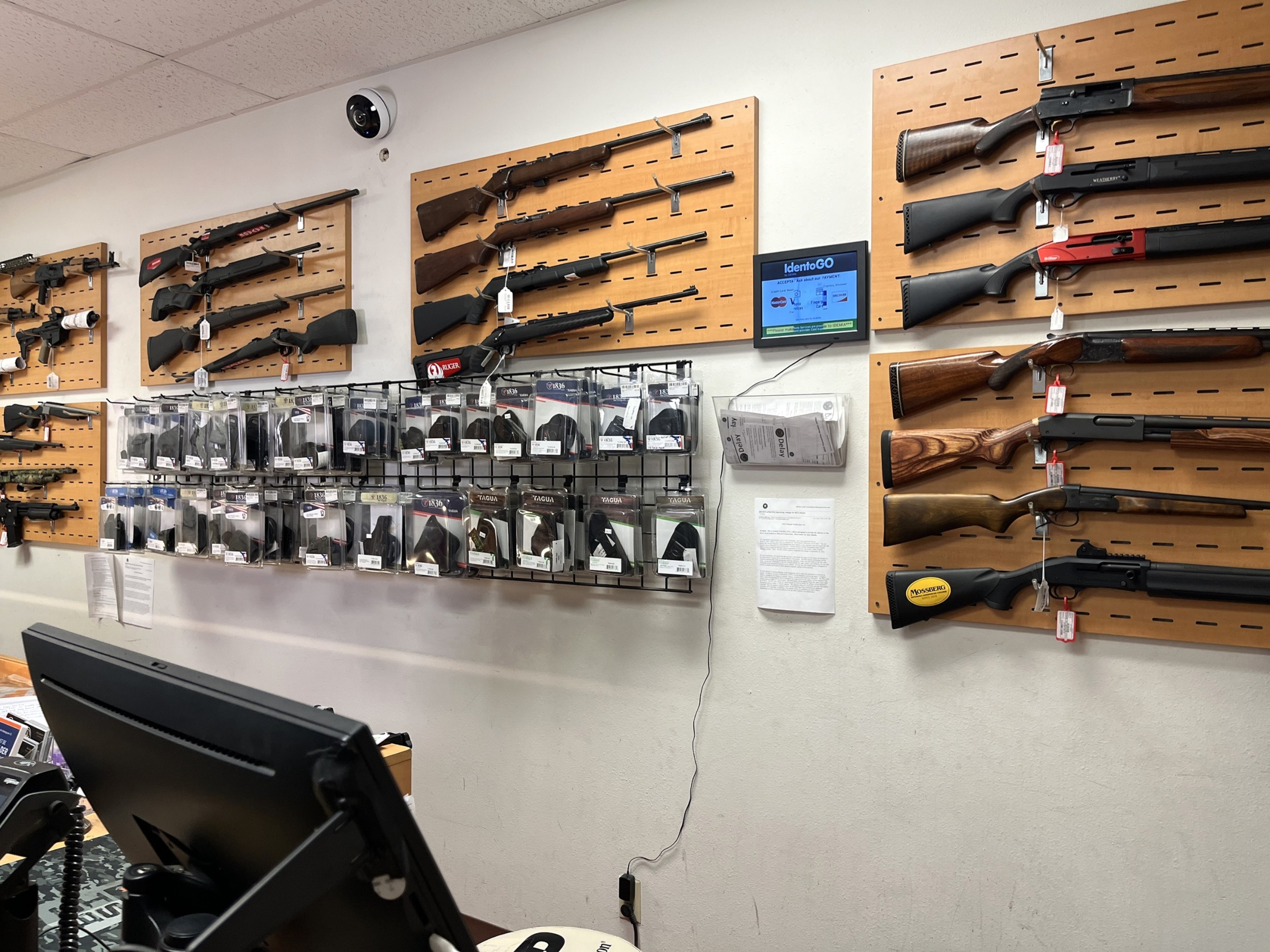
Bump stocks were removed from store shelves in 2018 after the Bureau of Alcohol, Firearms and Tobacco issued a new regulation classifying the devices as illegal machine guns.
ABC News
Justice Brett Kavanaugh said the fact that administrations of both parties had repeatedly said that the federal machine gun ban did not apply to bump stocks was “a reason for pause.”
“It’s not dispositive,” Kavanaugh said, “but it’s reason for pause.”
Justice Neil Gorsuch said he could “certainly understand why these things should be banned” but also wrestled with the implications of the ATF rule change on hundreds of thousands of Americans who had thought they were purchasing them legally.
“It’s going to ensnare a lot of people who are not aware of the legal prohibition,” said Justice Kavanaugh, echoing Gorsuch. Justice Alito also called potential prosecution of people who had legally purchased bump stocks as “disturbing.”
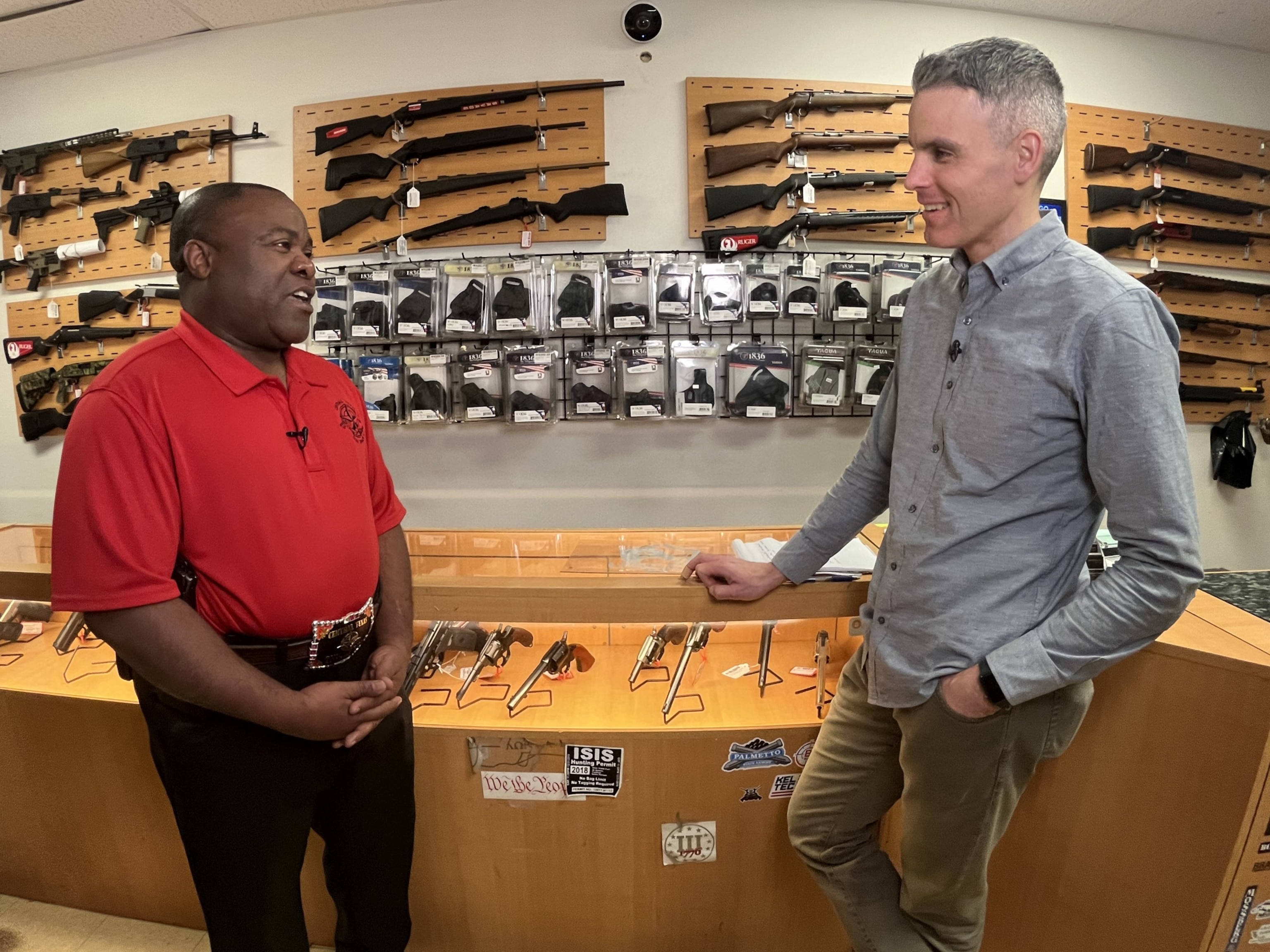
Michael Cargill, owner of Central Texas Gun Works in Austin, Tex., is asking the U.S. Supreme Court to strike down a federal ban on bump stocks.
ABC News
The court’s three liberal justices sought to cut through debate, focusing their questions on Congress’ original intent.
“Why do these various distinctions with respect to operations matter?” said Justice Elena Kagan. “I read this statute to be a classification statute that Congress is directing everyone or us to identify certain kinds of weapons, and those certain kinds of weapons are being treated in a particular way. They’re being prohibited.”
“I view myself as a good textualist,” Kagan later added, “but, textualism is not inconsistent with common sense.”
Justice Ketanji Brown Jackson said “weapons with bump stocks have triggers that function in the same way” as automatic weapons: “through a single, right, pull of the trigger or touch of the trigger, you achieve the same result of automatic fire.”
“No,” replied Jonathan Mitchell, the attorney representing Texas gun shop owner Michael Cargill, who is challenging the ban. “The premise of Your Honor’s question is not true. A single discharge of the trigger produces only one shot.”
Justice Sonia Sotomayor questioned why anybody would need a bump stock, if not for replicating the kind of machine-gun fire the government long ago sought to curtail.
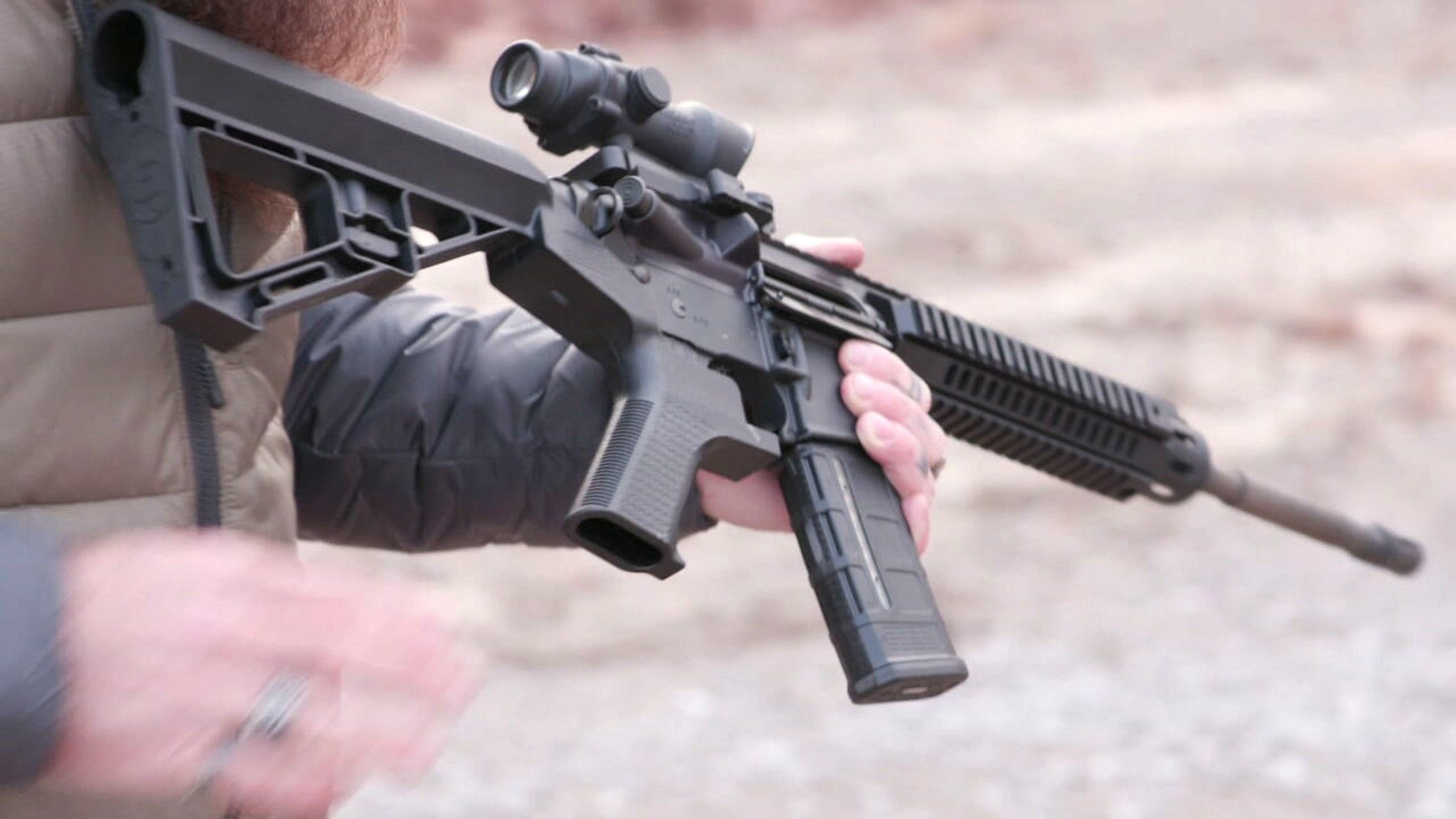
A bump stock attached to an AR-15 rifle harnesses the recoil power of a shot to help a shooter fire more rapidly and accurately.
ABC News
“Bump stocks can help people who have disabilities, who have problems with finger dexterity, people who have arthritis in their fingers,” replied Mitchell.
Sotomayor shot back: “Why would even a person with arthritis, why would Congress think they needed to shoot 400 to 800 rounds of ammunition [per minute] under any circumstance? If you don’t let a person without arthritis do that, why would you permit a person with arthritis to do it?”
“Well, they don’t shoot 400 to 700 rounds because the magazine only goes up to 50,” Mitchell replied.
Government experts say a semi-automatic weapon can theoretically fire up to 180 rounds per minute when operated by an experienced shooter. A traditional, fully automatic M-16 machine gun, by comparison, can fire 700-950 per minute. A bump stock-equipped semi-automatic rifle is estimated to be able to shoot 400-800 rounds per minute.
“The statutory definition of machine gun extends only to weapons that fire more than one shot automatically by a single function of the trigger,” said Mitchell. “Non-mechanical bump stocks fall outside the statutory definition.”
The justices are expected to render a decision in the case by the end of June.
The Supreme Court is currently embroiled in a heated debate over the legality of banning rapid-fire rifle bump stocks. These controversial devices have been at the center of the gun control debate in recent years, with advocates arguing that they are essential for self-defense and recreational shooting, while opponents claim they are dangerous and should be banned.
The controversy began in 2017 when a gunman used a bump stock to carry out a mass shooting in Las Vegas, killing 58 people and injuring hundreds more. In response to the tragedy, the Trump administration moved to ban bump stocks, arguing that they effectively turn semi-automatic rifles into fully automatic weapons, which are heavily regulated under federal law.
However, the ban has faced legal challenges from gun rights advocates who argue that the government does not have the authority to regulate bump stocks without congressional approval. The case made its way to the Supreme Court, where justices are sharply divided on the issue.
Conservative justices have expressed skepticism about the ban, arguing that it represents government overreach and infringes on Second Amendment rights. They have also raised concerns about the slippery slope of allowing the government to regulate accessories like bump stocks, which could lead to further restrictions on firearms.
On the other hand, liberal justices have supported the ban, citing the potential dangers of bump stocks and the need for common-sense gun control measures. They argue that the government has a responsibility to protect public safety and prevent tragedies like the Las Vegas shooting from happening again.
The Supreme Court’s decision on the bump stock ban could have far-reaching implications for gun control laws in the United States. If the ban is upheld, it could pave the way for further restrictions on firearms and accessories. If it is struck down, it could embolden gun rights advocates and make it more difficult for lawmakers to pass meaningful gun control legislation.
As the debate rages on, it is clear that the issue of bump stocks is far from settled. The Supreme Court’s decision will have a significant impact on the future of gun control in America and could shape the way we think about firearms and public safety for years to come.
